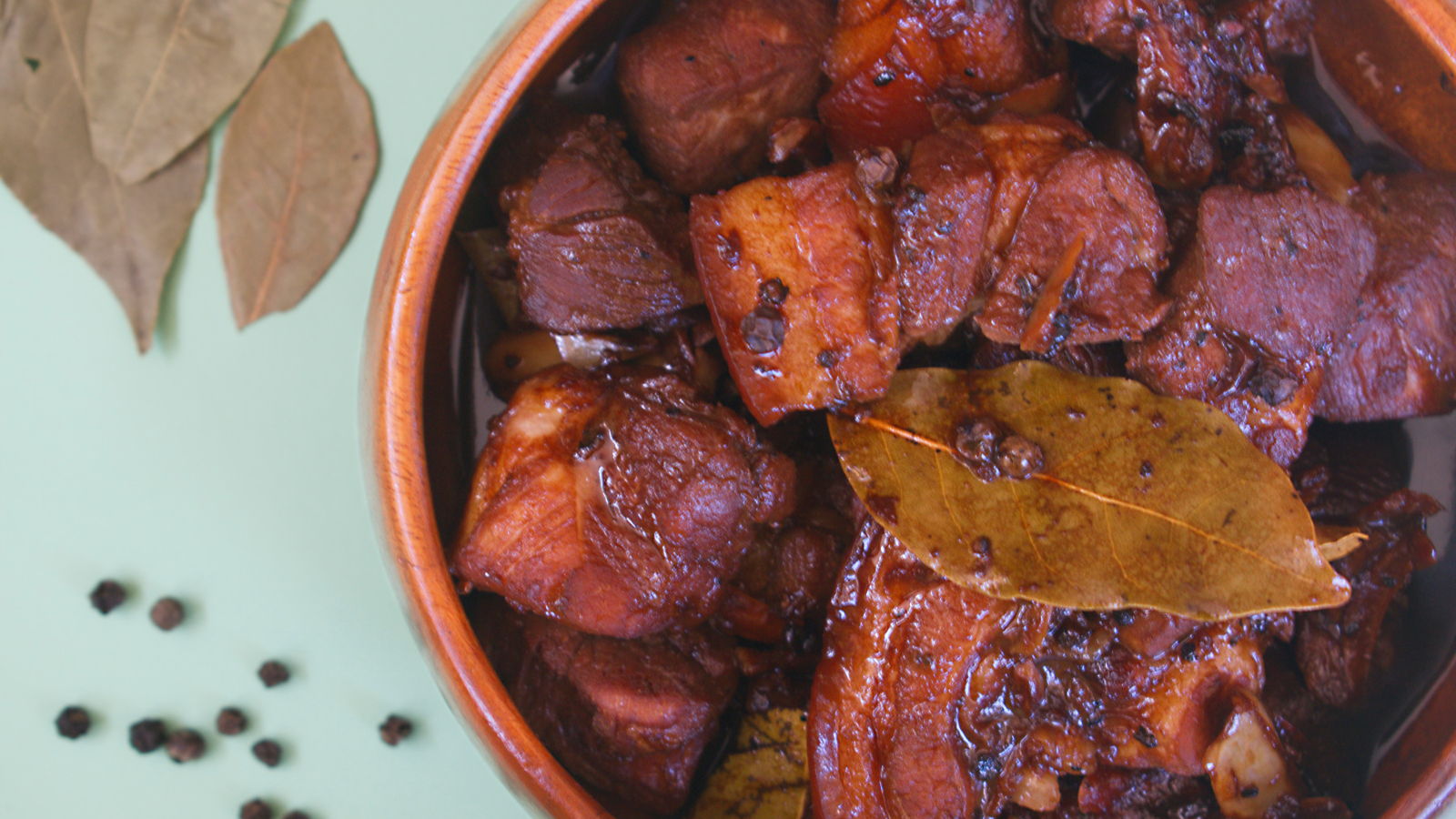The Filipino Adobo is the pride of Filipinos. It is a stew with bursting flavours and is fairly easy to make. Cooking the best Adobo dish from scratch only requires a few simple seasoning ingredients such as vinegar, soy sauce, garlic, black pepper and bay leaves which you would most likely have in the kitchen. These are the authentic flavours of the Filipino Adobo which is widely craved around the world.
Although making Adobo is simple, it is a bit difficult to find the right mix and technique to make it perfect. This recipe which I love making for my family has the perfect balance of sourness, saltiness and savoriness. Pork Adobo may be eaten as an accompanying dish with plain white rice and a quick vegetable stir-fry.
The different types of Adobo dishes
Many often confused the Filipino Adobo with the Mexican Adobo and vise-versa. The biggest difference in the Mexican Adobo is in its colour which is affected by the main ingredient, the chillies. Meanwhile, the base of the Filipino Adobo has a dark brown appearance as it is soy sauce based.
However, there are also other variations of Adobo dishes in different regions within the Philippines. Chicken Adobo with the addition of coconut milk and chillies is popular in the Bicol regions, southern part of Luzon Island. In the Laguna province which is located southeast of Manila, Yellow Adobo is well known. The distinct yellow colour of the dish is contributed by the use of turmeric. Another common version is water spinach Adobo known as Adobong Kangkong and eggplant Adobo which is called Adobong talong where meat is fully omitted.
Different types of meat or a fully vegan dish
Considered as the most versatile Filipino dish, it can be made with pork, chicken, duck, fish, shrimps, squids or any type of meat. Those who are on a vegan diet can replace the meat with water spinach to make Adobong Kangkong or simply replace the meat with tofu. Use firm tofu if you are planning for tofu Adobo.
Adding vegetables and eggs
If you prefer, potatoes, onions and hard boiled eggs may be added into this recipe. There are some newer recipes which include mushrooms or vegan meat. It may not be common in the households but it can definitely be done.
The secrets of vinegars in Adobo
Vinegar is one of the main ingredients in the dish. The best way to get the most out of the dish is to use a combination of white vinegar and cane vinegar. It's a trick that I learned along the way. White vinegar has a sharp taste while cane vinegar has a mellow sweet taste. Combining them results in a milder sour flavour with a tinge of sweetness.
If you do not have cane vinegar, then use only white vinegar which is more widely available. In fact, the traditional recipe calls for the usage of any type of vinegar. For this particular recipe, use 6 tablespoons of white vinegar if you are not using any cane vinegar.
Which part of pork to use?
Pork shoulder is usually used in the dish as it has some marbled fats in the meat. If you prefer a fattier cut, opt for pork belly.
Marinating meat
Traditionally, the dish is marinated for only 30 minutes. Sometimes, home cooks will marinate the meat for a very short period of time. It is not necessary to put it in the refrigerator unless you want to marinate it for one hour or overnight.
Cooking pork Adobo in a slow cooker
A stewed dish such as pork Adobo will cook perfectly in a slow cooker. Simply add all ingredients into the pot to cook at low heat for 6 hours or at high heat for 4 hours. If it starts to dry up, you can add a bit of water to the dish.
Long lasting Adobo
Due to the high content of vinegar and non usage of water, Adobo can be left at room temperature for up to 3 days. To do so, store it in an air-tight container away from the sun once the dish has been cooled to room temperature.
Since it lasts long, it is often packed for lunch and as picnic food. Some people cook Adobo in advance and eat it a few days later as the taste becomes better when the flavor is intensified and more absorbed by the meat.
For later consumption, Adobo can be kept in the refrigerator for up to a week or 3 months in the freezer.

